 HomeChoice have agreed to be taken over ISP Tiscali in exchange for 11.5% of their new owner.
HomeChoice have agreed to be taken over ISP Tiscali in exchange for 11.5% of their new owner.
The tenacity of HomeChoice has always impressed us. They’ve been going for years and have just refused to give up. Getting started in the days when Video on Demand meant asking to rent a video from your local video rental shop, they’ve been through quite a number of investment rounds, some so severe that the investors ended up with nothing.
Never hitting big numbers, the writing has been on the wall for them, what with Sky getting into broadband, NTL re-enlivining themselves with Virgin mobile and BT Vision on the horizon.
 HomeChoice has been settled on around 45,000 subscribers for quite a while now as they’ve been restricted to operating within London and some areas to its north. They just haven’t had the investment available to unbundle anymore exchanges beyond the 145 they have to spread their service. Their original expansion was hampered by the huge cost BT used to charge them for the Visionstream service they needed to run the service.
HomeChoice has been settled on around 45,000 subscribers for quite a while now as they’ve been restricted to operating within London and some areas to its north. They just haven’t had the investment available to unbundle anymore exchanges beyond the 145 they have to spread their service. Their original expansion was hampered by the huge cost BT used to charge them for the Visionstream service they needed to run the service.
The last murmur about HomeChoice was that Sky was casting their eye in their direction, but we suspect that this was floated by the company itself to try and flush potential suitors out of the wood work.
As to why Tiscali has bought them …
It’s likely that Tiscali feels they need to move fast to avoid becoming sidelined by the other companies putting themselves forward as the Big Boys in the ISP/IPTV/Phone market.
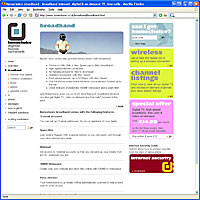 By buying HomeChoice they’ll start with something they can build on, rather than having to start from scratch, giving them a time advantage. This is made very real by gaining 145 unbundled exchanges within London taking Tiscali to a total of 330 country-wide.
By buying HomeChoice they’ll start with something they can build on, rather than having to start from scratch, giving them a time advantage. This is made very real by gaining 145 unbundled exchanges within London taking Tiscali to a total of 330 country-wide.
Homechoice has also spent quite a lot of effort in the last year building up their content relationships, creating niche programming.
As to the backend iron that HomeChoice is using to power the VOD – it may be that is getting a bit long in the tooth these days.
Don’t forget Tiscali don’t actually have to put their hands in their pockets either, just swap stock.
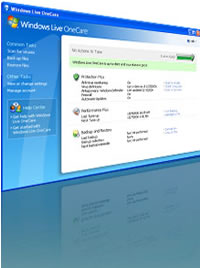 The study of sales figures after the first month of Microsoft’s Windows Live OneCare will not make pleasant reading for the current PC security software companies.
The study of sales figures after the first month of Microsoft’s Windows Live OneCare will not make pleasant reading for the current PC security software companies. NPD’s figures showed that the losses for the previously dominant security companies – Symantec cried the biggest tears with a 10.1% loss; McAfee said bye bye to 3.3% and Trend Micro 1.3%.
NPD’s figures showed that the losses for the previously dominant security companies – Symantec cried the biggest tears with a 10.1% loss; McAfee said bye bye to 3.3% and Trend Micro 1.3%. We’ve been keeping our eyes on
We’ve been keeping our eyes on 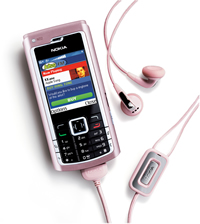 O2 have announced the usage charges of Visual Radio. At O2’s standard data rates of £3.00 per Mb dependent on tariff or O2 Browse and Download bolt-ons from £3 for 2mb and £5 for 4mb.
O2 have announced the usage charges of Visual Radio. At O2’s standard data rates of £3.00 per Mb dependent on tariff or O2 Browse and Download bolt-ons from £3 for 2mb and £5 for 4mb.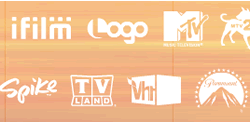 Viacom have been making further moves to secure their future in digital media. Given all of the moves they’ve made this week, we thought it was worth summarising it.
Viacom have been making further moves to secure their future in digital media. Given all of the moves they’ve made this week, we thought it was worth summarising it. Viacom are experts at delivering messages (TV, films and adverts to you and me) on television and films, and as we can see from the above deals, they’ve caught on that they really ought to be able to do this online too. To try and simplify this, they were looking for a way to smooth the transition of their content to the digital realm.
Viacom are experts at delivering messages (TV, films and adverts to you and me) on television and films, and as we can see from the above deals, they’ve caught on that they really ought to be able to do this online too. To try and simplify this, they were looking for a way to smooth the transition of their content to the digital realm.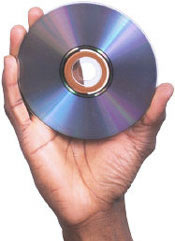 After refusing to entertain the idea for many years, the DVD Copy Control Association (DVD CCA), are ‘actively considering’ letting DVD to be burnt in-shops and by video download services.
After refusing to entertain the idea for many years, the DVD Copy Control Association (DVD CCA), are ‘actively considering’ letting DVD to be burnt in-shops and by video download services.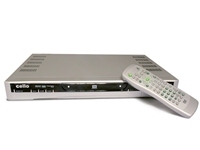 DVD CCA are saying that once they get that up and working, they’ll work on a version that consumer can use at home. They’re talking about letting it record films, TV shows – clearly predicting the time when TV programs will not be freely recorded. Some online services like
DVD CCA are saying that once they get that up and working, they’ll work on a version that consumer can use at home. They’re talking about letting it record films, TV shows – clearly predicting the time when TV programs will not be freely recorded. Some online services like 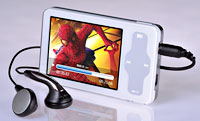 Recent research shows that US consumers are becoming more aware of Portable Media Players (PMPs), devices that can play video as well as music. Over 75% of 1,099 people polled were aware of PMPs.
Recent research shows that US consumers are becoming more aware of Portable Media Players (PMPs), devices that can play video as well as music. Over 75% of 1,099 people polled were aware of PMPs.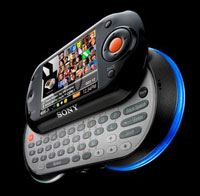 Sony threw their hat into the PMP ring when they
Sony threw their hat into the PMP ring when they  A visual communications company, All New Video, have announced a deal with BBC to enable feedback and input into TV programmes from viewers, video calling from 3G phones, Web cams and ISDN. On the voice side, it will add VoIP to its inbound voice channels.
A visual communications company, All New Video, have announced a deal with BBC to enable feedback and input into TV programmes from viewers, video calling from 3G phones, Web cams and ISDN. On the voice side, it will add VoIP to its inbound voice channels.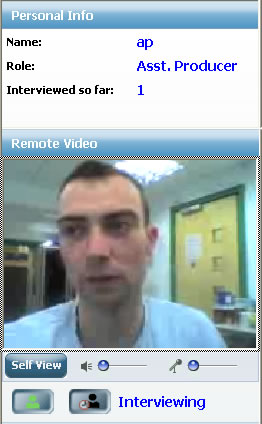 The system give the assistant producer the ability to carry out a video chat with the viewer letting them ascertain their suitability of the show – frankly, filter out those not relevant. Each person can also be ranked and some notes made about them.
The system give the assistant producer the ability to carry out a video chat with the viewer letting them ascertain their suitability of the show – frankly, filter out those not relevant. Each person can also be ranked and some notes made about them.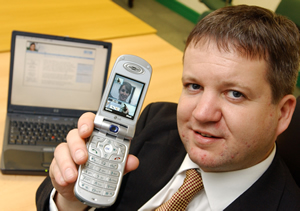 The new BBC system will let people do the same from the safety of their own bedrooms, where they’ll be able to leave their five minutes of video wisdom in a video mail system.
The new BBC system will let people do the same from the safety of their own bedrooms, where they’ll be able to leave their five minutes of video wisdom in a video mail system.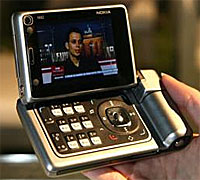 Will you be one of the near-half billion (446m to be exact) people that IMS Research estimate will be watching TV on their cellular handsets around the globe by 2011?
Will you be one of the near-half billion (446m to be exact) people that IMS Research estimate will be watching TV on their cellular handsets around the globe by 2011?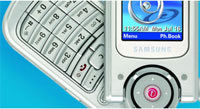 IMS Research
IMS Research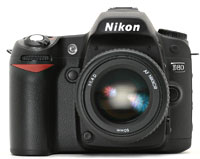 Nikon has announced their new ten megapixel D80 digital SLR, the company’s successor to the trailblazing D70/D70s cameras.
Nikon has announced their new ten megapixel D80 digital SLR, the company’s successor to the trailblazing D70/D70s cameras.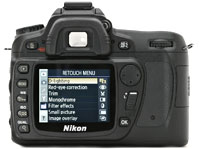 The D80 also offers a suite of in-camera retouching tools including shadow / highlight enhancement, red-eye reduction, trimming and monochrome and filter effects.
The D80 also offers a suite of in-camera retouching tools including shadow / highlight enhancement, red-eye reduction, trimming and monochrome and filter effects.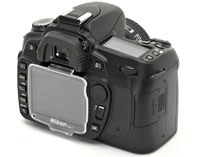 Nikon D80 specs Sensor 10.2 million effective pixels
Nikon D80 specs Sensor 10.2 million effective pixels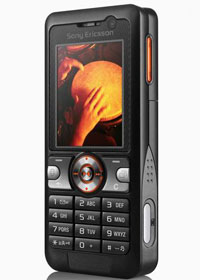 Sony Ericsson has announced the latest addition to its popular ‘K’ series, with the ‘candybar’ shaped Sony K618 promising super fast video, music streaming and Web browsing.
Sony Ericsson has announced the latest addition to its popular ‘K’ series, with the ‘candybar’ shaped Sony K618 promising super fast video, music streaming and Web browsing.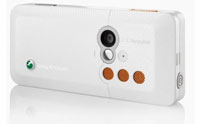 The memory card can be upgraded up to a maximum of 1GB of storage.
The memory card can be upgraded up to a maximum of 1GB of storage.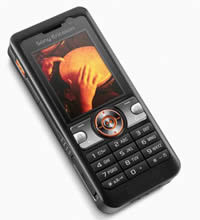 For keen bloggers who like to update their personal diaries when you’re on the move, the K618 can send images direct to their own blog via Mobile Blogger.
For keen bloggers who like to update their personal diaries when you’re on the move, the K618 can send images direct to their own blog via Mobile Blogger.